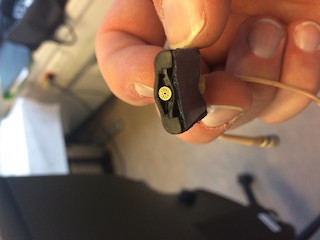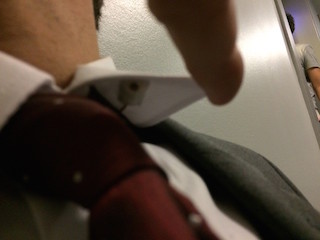 For more than 10 years, production sound mixer and location sound recordist, David Thirion, has been using DPA microphones to capture audio for film and television projects. Their audio quality and natural sound was a key reason for his choice, but equally important was the tiny size of some models, which makes them ideal for situations where they need to be hidden on actors’ bodies or in costumes.
For more than 10 years, production sound mixer and location sound recordist, David Thirion, has been using DPA microphones to capture audio for film and television projects. Their audio quality and natural sound was a key reason for his choice, but equally important was the tiny size of some models, which makes them ideal for situations where they need to be hidden on actors’ bodies or in costumes.
In recent months, Thirion has been experimenting with DPA’s latest bodyworn products, the 6000 Subminiature Series, in particular the 6060 Subminiature Omnidirectional lavalier microphone. On the set of Parlement, a new television series created by Belgian-based Artémis Productions, he used it to great effect – although not how he originally intended.
“On paper, DPA’s 6000 Series is the perfect tool because it sounds as good as the DPA 4060 lavalier, yet is much smaller and therefore easier to conceal,” Thirion says. “In the end, it comes down to choosing the right microphone for the job. We initially planned to use it on a female actor, but she was wearing such light silk that it was impossible to hide the mic because the weight of the cable was pulling at the fabric. Instead we used a DPA 4061 lavalier microphone secured with a bra clip, which worked just fine.”
The 6060, however, did solve a different problem when it proved ideal for the show’s male talent whose chest was too hairy to have a microphone attached to it. “As everyone working in film and TV sound knows, it can be very difficult to mic up a hairy chested actor wearing a white office shirt, no tie and a blazer,” Thirion explains. “We found the perfect spot for the 6060 in the collar of the shirt. We used an Ursa mini mount and covered with white Ursa moleskin so that it was completely disguised. We also hid a 6060 in a tie knot using a Sanken RM11 concealer. The mic is so slim that it helped prevent any tie knot deformation.”
 Thirion, who has been working in film and TV sound for nearly 20 years, says the trick to hiding microphones in clothing is to expose them as much as possible. This might sound counter-intuitive, but he believes it is better to give them some space in order to achieve the best sound.
Thirion, who has been working in film and TV sound for nearly 20 years, says the trick to hiding microphones in clothing is to expose them as much as possible. This might sound counter-intuitive, but he believes it is better to give them some space in order to achieve the best sound.
“If you can nearly see them in plain sight, you get better sound quality and intelligibility because there is air around the microphone.” He says. “You also reduce any risk of fabric rustling against the capsule or against the cable, which is also a source of noise.”
As a self-confessed fan of DPA microphones, which he describes as “the best mics out there,” Thirion had no hesitation in choosing them for the Parlement project, which was shot on-location in Europe at the end of last year.
“We knew we would be confronted with difficult costumes and very little time to mic up all the talent,” he explains. “The shooting pace on a TV series is much faster than it is on a feature film. We did 10 episodes in less than two months and were shooting eight to 10 minutes of footage a day, using two cameras at the same time on pretty much every set. The schedule was so fast that you couldn’t start fussing about placing microphones on talent and then readjusting them on every single take. Therefore, we chose microphones that offered good sound quality but were small and easy to hide.”
His DPA line up included a 4160 Slim Omnidirectional Microphone, which was perfect for hiding in blazers and suit jackets. “It was a great tool to have on-set because we could hide it behind the rosebud hole on a jacket using a DPA buttonhole mount. The microphone heads were exposed but couldn’t be seen so we got great results.”
Since completing Parlement in December 2019, Thirion has been teaching at a film school while he waits for his next project. His impressive credit list includes many documentaries for National Geographic, Discovery, Arte, France 5, RTBF, BBC and Channel 4. He has also worked on plus feature films such as Complete Strangers with Spanish director Pau Maso and Body of Water and How To Stop A Reccurring Dream, where he worked as boom operator for Production Sound Mixer Aris Anastassopoulos.
DPA Microphones www.dpamicrophones.com
